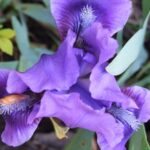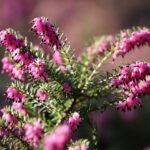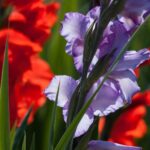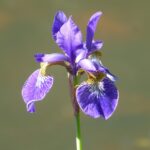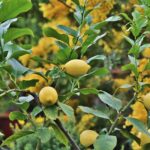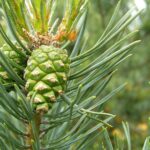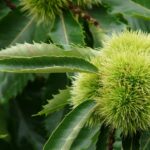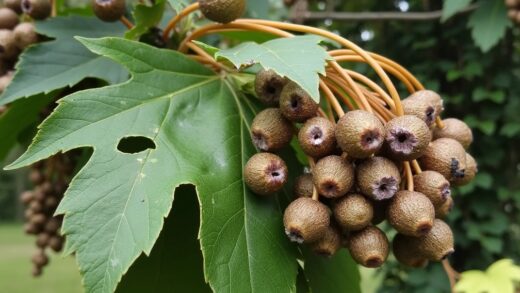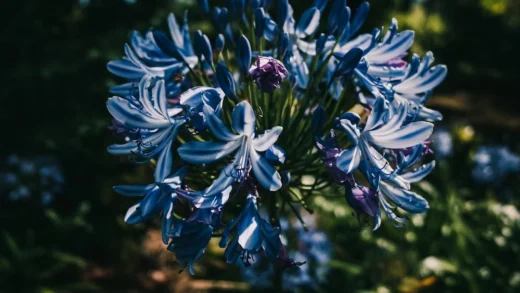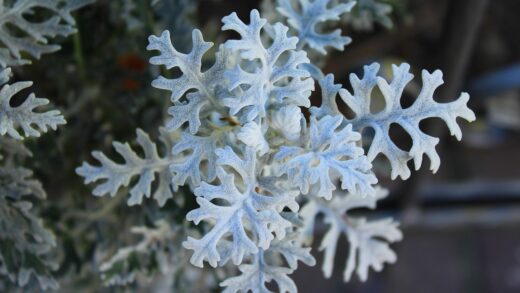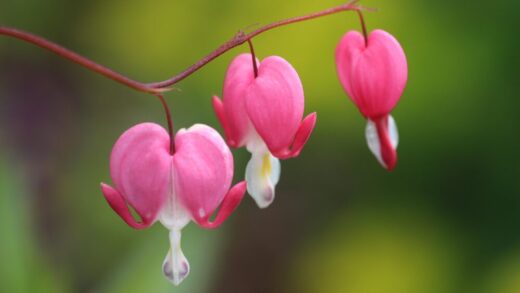While the Atlas cedar is a remarkably resilient and robust tree, it is not entirely immune to the challenges posed by various diseases and pests. A healthy, well-sited cedar with strong vigor is its own best defense, as it is far less likely to succumb to opportunistic attackers than a tree that is stressed by poor conditions such as drought, waterlogged soil, or nutrient deficiencies. Proactive monitoring and early identification of any potential issues are paramount. By learning to recognize the common culprits and understanding the principles of integrated pest management, you can protect your valuable specimen and ensure its long-term health and beauty.
One of the most common disease problems affecting Atlas cedars and other conifers is tip blight, often caused by fungal pathogens like Phomopsis or Kabatina. This disease typically appears in the spring, causing the new growth at the tips of the branches to turn yellow, then brown, and eventually die back. You may also notice small, black fruiting bodies of the fungus on the dead needles or stems. Tip blight is most prevalent during cool, wet spring weather, which creates the ideal conditions for fungal spores to germinate and spread.
Root rot is another serious threat, and it is almost always linked to poor soil drainage. Fungi such as Phytophthora thrive in waterlogged, anaerobic soil conditions, where they attack and destroy the tree’s root system. The above-ground symptoms can be deceptive, often mimicking drought stress, with needles turning yellow or brown and the canopy thinning out. By the time these symptoms are visible, the root damage is often extensive. The absolute best defense against root rot is prevention, which means planting the cedar in a location with excellent drainage from the very beginning.
When it comes to insect pests, the Atlas cedar can be targeted by several common adversaries. Aphids are sap-sucking insects that can congregate in large numbers on new growth, leading to distorted shoots and a sticky residue called honeydew, which can in turn lead to sooty mold. Another group of sap-suckers are scale insects, which appear as small, immobile bumps on the needles and twigs. A heavy infestation of scale can cause needle drop and branch dieback by robbing the tree of essential nutrients.
More serious threats include wood-boring insects, such as the cedar bark beetle. These pests are typically secondary invaders, meaning they are attracted to trees that are already weakened or stressed. The adult beetles bore through the bark to lay their eggs, and the larvae then tunnel through the vital cambium layer, disrupting the tree’s ability to transport water and nutrients. Evidence of borers includes small holes in the bark and fine, sawdust-like frass. A borer infestation is often a sign of a deeper underlying health issue with the tree.
More articles on this topic
Common fungal diseases
Fungal diseases are a primary concern for the health of an Atlas cedar, with several pathogens capable of causing significant damage. Tip blight, as previously mentioned, is a frequent issue, particularly affecting the tender new growth in the spring. To manage this disease, it is crucial to prune out and destroy any infected branch tips as soon as they are noticed to prevent the fungus from spreading further into the tree. Improving air circulation through proper spacing and selective pruning can also help the foliage dry more quickly, making conditions less favorable for the fungus. In cases of severe, recurring infections, the application of a registered fungicide in the spring as new growth emerges may be warranted.
Another fungal issue, though less common on true cedars than on junipers, is rust disease. While the Atlas cedar is not a primary host for the most common cedar-apple rust, it can be affected by other, similar rust fungi. These diseases typically cause small, gnarled galls to form on the branches. During wet spring weather, these galls produce bizarre, orange, gelatinous tendrils that release spores to infect alternate host plants. While usually not life-threatening to the cedar, heavy infections can reduce the tree’s aesthetic appeal and vigor. Management involves pruning out the galls during the dry season.
Canker diseases, caused by various fungi, can also affect Atlas cedars, especially those under stress. These diseases result in localized areas of dead tissue on branches or the main trunk, which often appear as sunken, discolored, or resinous lesions. Cankers can girdle a branch, cutting off the flow of water and nutrients and causing everything beyond the canker to die. There is no chemical cure for canker diseases; management relies on maintaining excellent tree health and surgically pruning out infected branches, making sure to cut well back into healthy wood.
To prevent the establishment and spread of fungal diseases, good sanitation practices are essential. This includes raking up and disposing of fallen needles and debris from around the base of the tree, as this material can harbor fungal spores over the winter. When pruning, always use tools that have been sterilized with rubbing alcohol or a bleach solution between cuts, especially if you are working on a tree known to have a disease. These simple preventative measures are often the most effective tools in your disease management arsenal.
More articles on this topic
Identifying and managing insect pests
Effective pest management begins with regular and careful inspection of your Atlas cedar. Many insect problems can be controlled with minimal intervention if they are caught early. When examining your tree, look closely at the needles, twigs, and branches. Check for the presence of the insects themselves, such as aphids clustered on new shoots, or for the signs they leave behind, like the sticky honeydew from sap-suckers, chewed needles, or the silken tents of bagworms.
For common pests like aphids and spider mites, which can cause discoloration and stippling on the needles, a strong jet of water from a hose is often the first and best line of defense. This simple physical control can dislodge a large portion of the pest population without the need for chemicals. If the infestation persists, insecticidal soap or horticultural oil can be very effective. These products work by smothering the soft-bodied insects and have a low impact on beneficial predatory insects in your garden.
Scale insects present a greater challenge because their hard, waxy covering protects them from many contact insecticides. The most vulnerable stage in their life cycle is the “crawler” stage, which occurs shortly after they hatch and before they form their protective shell. The application of horticultural oil during the dormant season can help smother overwintering adults and eggs, while targeted sprays during the crawler stage in late spring can be effective for controlling the new generation.
For the more destructive pests like bark beetles and other borers, management is focused almost entirely on prevention. Since these insects are drawn to stressed trees, the best strategy is to maintain optimal tree health through proper watering, fertilizing, and soil management. If you discover an active borer infestation, it is often too late for the affected branch or even the entire tree. In such cases, the infested wood must be promptly removed and destroyed to prevent the pests from emerging and attacking other nearby trees. Consultation with a certified arborist is highly recommended for dealing with borer issues.
Integrated pest management strategies
Integrated Pest Management (IPM) is a sustainable and intelligent approach to managing pests and diseases that prioritizes long-term prevention over a reactive reliance on chemical treatments. The foundation of IPM for an Atlas cedar is to create a healthy, resilient tree. This begins with proper site selection and planting, ensuring the tree has the sun, space, and well-drained soil it needs to thrive. A vigorous tree is naturally more resistant to pests and better able to tolerate minor damage without suffering a significant decline in health.
A key tenet of IPM is regular monitoring. By inspecting your tree frequently, you can detect problems at their earliest stages when they are easiest to control. This allows you to intervene with the least toxic methods first. For example, catching an aphid infestation when it is just a small colony on one branch allows you to simply prune that tip off or wash them away with water, avoiding the need for any sprays. This proactive approach prevents small problems from escalating into major crises.
IPM encourages the use of cultural and mechanical controls as the primary line of defense. Cultural controls include practices like improving air circulation through pruning, maintaining good sanitation by cleaning up fallen debris, and using mulch to promote soil health. Mechanical controls are direct, physical actions, such as hand-picking bagworms, spraying pests off with water, or setting traps. These methods are targeted and have a minimal impact on the broader garden ecosystem.
Chemical controls, such as pesticides and fungicides, are used in an IPM program only as a last resort when monitoring indicates that a pest or disease problem is reaching a level that could cause significant harm to the tree. When chemicals are necessary, the least toxic and most targeted options are chosen. For example, using a specific biological insecticide that only affects caterpillars is preferable to a broad-spectrum chemical that kills all insects, including beneficial ones. This judicious use of chemicals protects the tree while preserving the health of the surrounding environment.
The role of environmental stress
Environmental stress is a significant predisposing factor for many of the disease and pest problems that can afflict an Atlas cedar. A tree that is stressed is like a person with a weakened immune system; it simply does not have the resources to effectively defend itself against attack. Drought is one of the most common stressors. A water-deficient tree is not only weaker but also becomes a prime target for wood-boring insects, which are specifically attracted to the chemical signals released by drought-stressed trees.
Conversely, excessive moisture and poor drainage create a different but equally dangerous form of stress. Constantly saturated soil deprives the roots of oxygen, leading to root suffocation and decay. This not only weakens the entire tree by impairing its ability to take up water and nutrients but also creates the perfect environment for devastating root rot pathogens. This is why ensuring excellent drainage is a non-negotiable requirement for growing a healthy Atlas cedar.
Other environmental factors can also contribute to stress. Soil compaction, common in urban and suburban landscapes, can restrict root growth and reduce water and oxygen availability. Physical damage to the trunk or branches from lawnmowers, string trimmers, or storms creates open wounds that serve as entry points for canker fungi and wood-boring insects. Improper planting, such as burying the root flare too deeply, is a chronic stressor that can lead to a slow decline over many years.
By focusing on alleviating these environmental stressors, you can dramatically reduce the likelihood of your Atlas cedar encountering serious pest or disease issues. This proactive approach involves providing deep, infrequent waterings during drought, ensuring the planting site is well-drained, protecting the tree from physical injury, and mulching to prevent soil compaction. Ultimately, preventing stress is the most effective form of pest and disease management you can practice.







